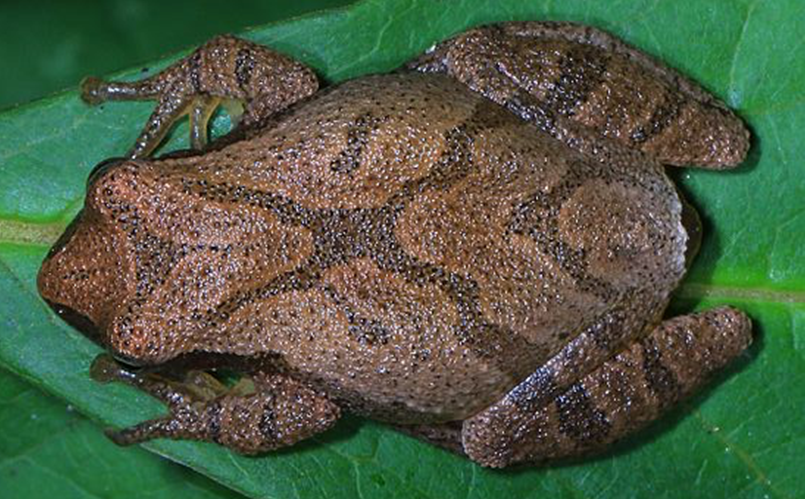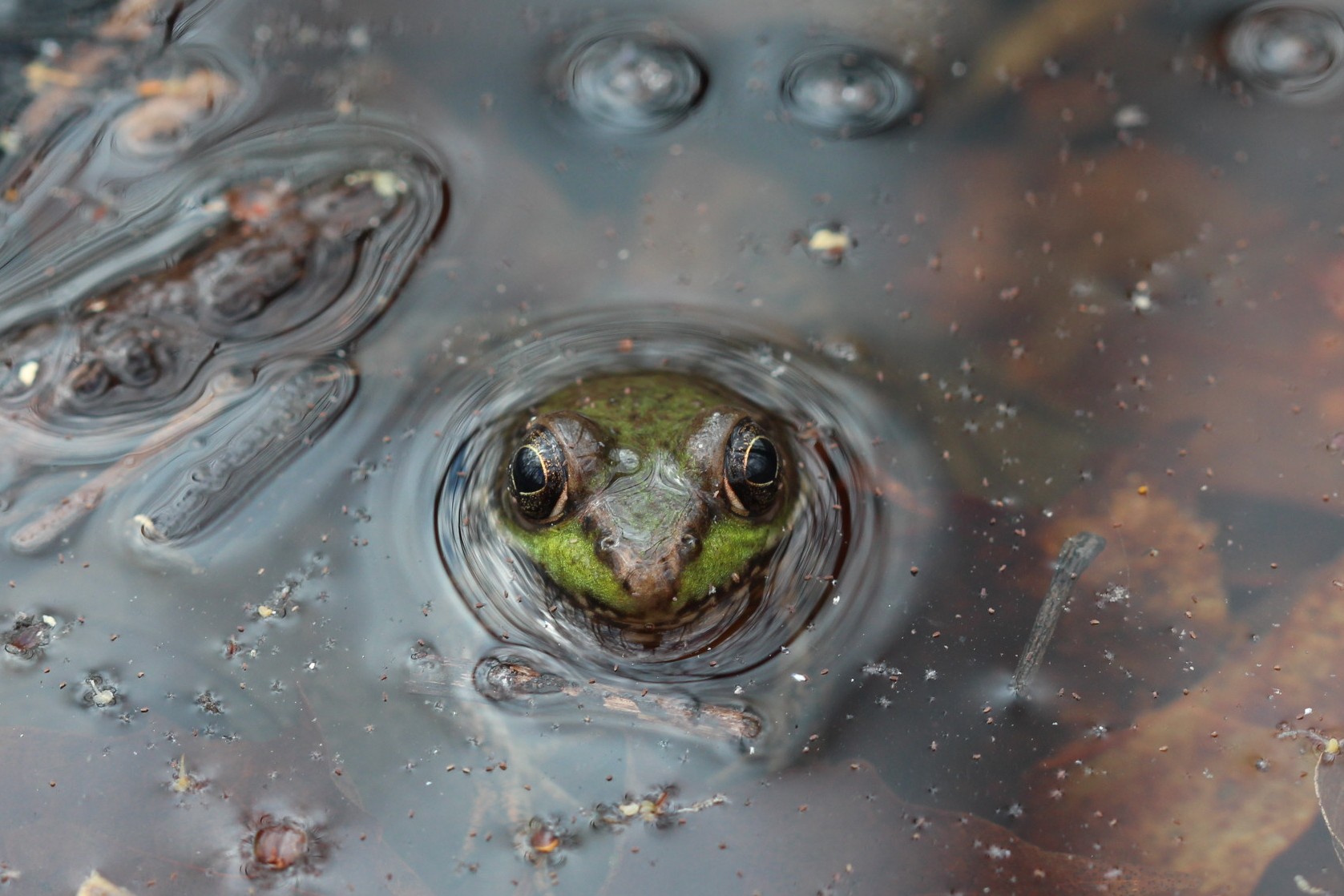It’s time – hop in the car or on your bike and head to a State Park near you! While you’re there, be sure your ears are open and your eyes are peeled for some awesome amphibian friends! It’s a good opportunity to find out which of the 11 frog species found in New York State are living in our State Parks.
Frogs are amphibians, meaning they live on both land and under water. When females lay eggs, it typically occurs in a nearby pond. The jelly-like egg masses hatch into tadpoles (pollywogs) with round bodies and long finlike tails. Tadpoles develop gills so they can breathe underwater just like fish do! Through a lifecycle process known as metamorphosis, the tadpole begins to develop legs, bulging eyes and air-breathing lungs. All the while the long slender tail starts to shrink and eventually disappears. This frog can now survive on land, breathing in the fresh summer air!

Frogs spend most of their time underground, hanging out in trees, or in the water. On warm summer nights they will emerge from hiding and head to nearby ponds, lakeshores and wetlands. When trying to identify frog species remember to consider the following: coloration, patterns, skin texture (moist or dry), presence or absence of webbing between the toes, and more. If you can’t see your amphibian friends, but you can hear them, take this time to record its unique call and try to identify it when you get home!
Here are just a few of the frog species found in our State Parks:
Northern Spring Peeper (Pseudacris c. crucifer)

The tiny spring peeper can range from a rusty brown to a greenish-gray with a distinct dark X or cross on its back. Its skin is smooth and the belly is cream-colored. This species is also known for hanging out in trees, with its unwebbed toes and sticky pads. Spring Peepers breed earlier in the season than other frog species. If you’ve ever spent an evening camping or sitting by the water, you’ve probably heard their infamous “PEEP” or call.
American Bull Frog (Rana catesbeiana)

The bull frog is the largest frog in North America, reaching lengths of 6 to 8 inches. It’s a brownish-green color with dark colored bands or blotches on its hind legs. Unlike the treefrogs, the bull frog has webbed hind feet. They’re often found near permanent waters with lots of vegetation. This species size and carnivorous diet allows it to munch on creatures such as snakes, bats, ducklings and other frogs! Behind the bull frog’s eyes are eardrums known as tympanic membranes. The size of these membranes can be used to determine if the frog is a male (it’s larger than the eye) or a female (the membrane is the same size as the eye). Look for this species between mid-March and mid-July. They may startle you with their really load “croak”.
Green Frog (Rana clamitans)

This is one of the most common frogs across NY State. It is similar to but smaller than a bullfrog. Like the bullfrog, the green frog is brownish-green with bright green on its face and spends most of its time in and near ponds and wetlands. The adults are 3-4 inches long and breed from May to August. Their regular call goes “boing” like the sound of a plucked rubber band or banjo sting. They also have an alarm call, a loud squeak, that you will hear if you scare them into the water. Move slowly towards the edge of the pond to look for these critters and be ready when they squeak and leap into the water!

Northern Cricket Frog (Acris crepitans)

The northern cricket frog is the smallest and most rare frog species in NY. It is listed as endangered in the State of NY. Adults reach about 1 inch in length, but despite their size, can jump about 5 to 6 feet. Eastern cricket frogs are brown to dull green in coloration with a triangular marking between the eyes. These frogs love shallow ponds with lots of floating vegetation. It has an unusual call, described as two pebbles being clicked together repeatedly. View the northern cricket frog conservation guide created by the New York Natural Heritage Program.
Other awesome frog species found in New York:
Gray Treefrog
Western Chorus Frog
Mink Frog
Wood Frog
Northern Leopard Frog
Southern Leopard Frog
Pickerel Frog
More links with frog/toad calls
Calls of Frogs and Toads of the Northeast
Post By Falon Neske- SCA and State Parks
Resources
Frogs and Toads of New York State
Featured image, gray tree frog, State Parks










